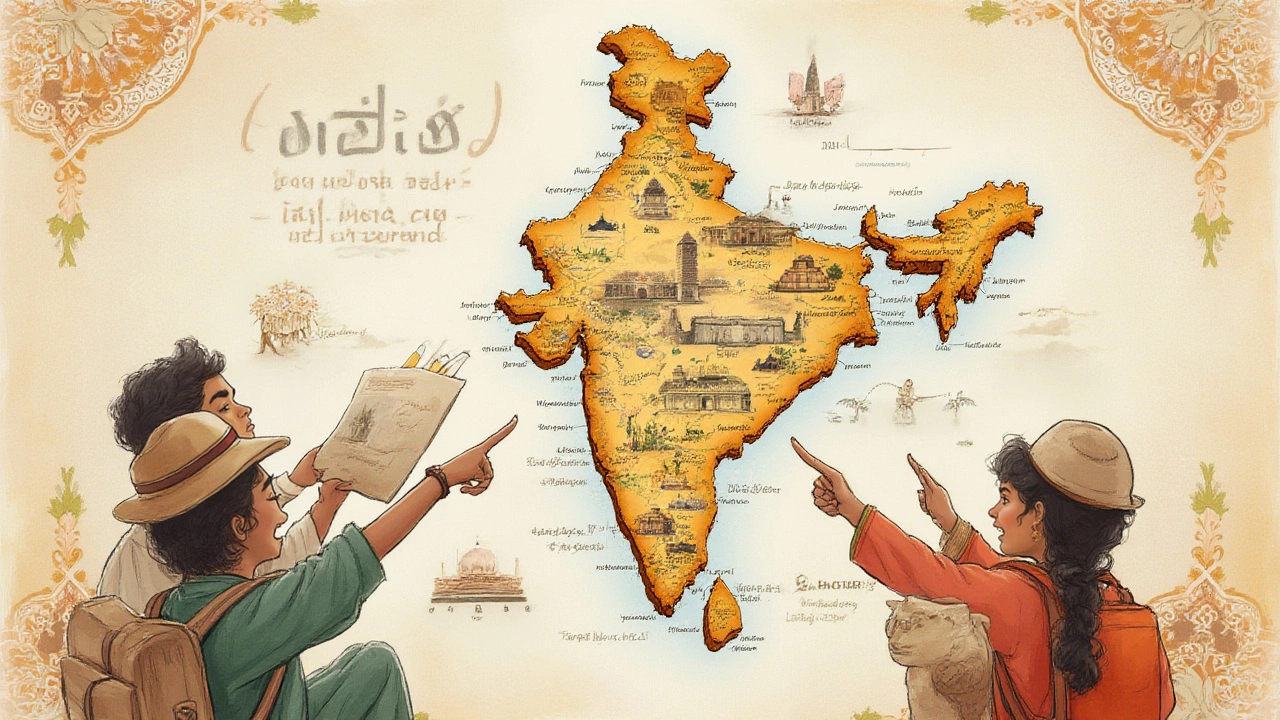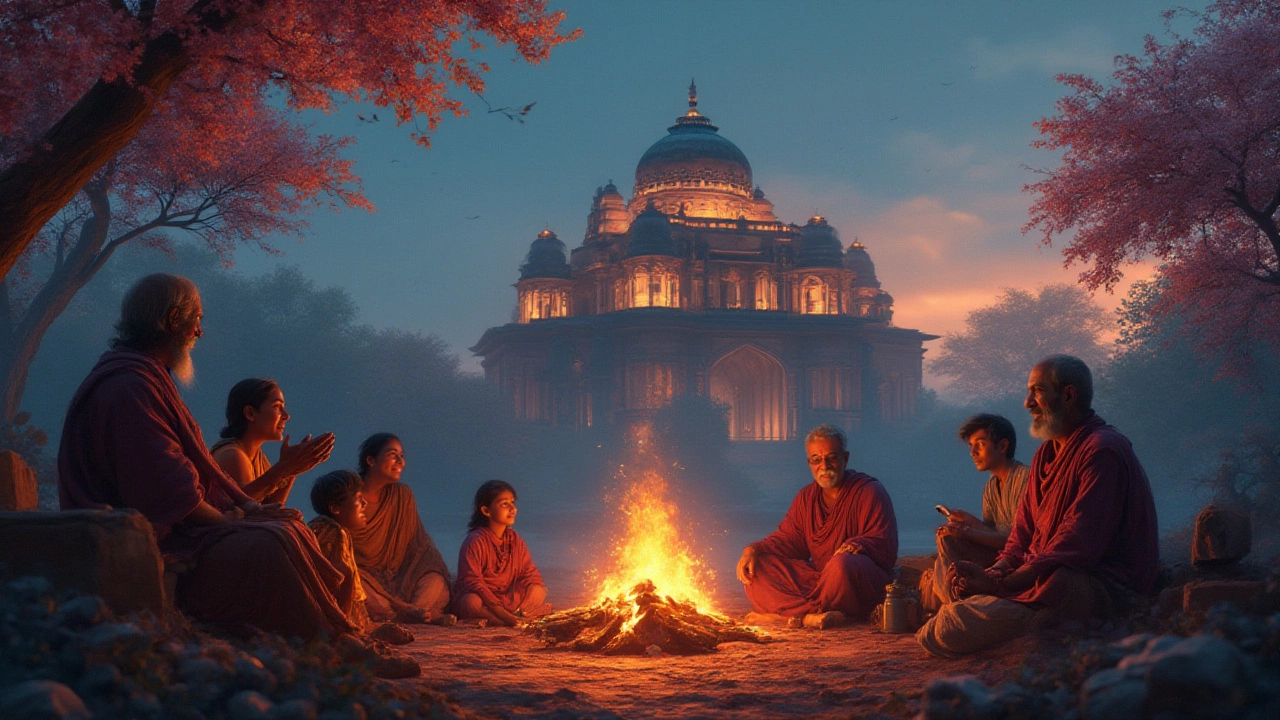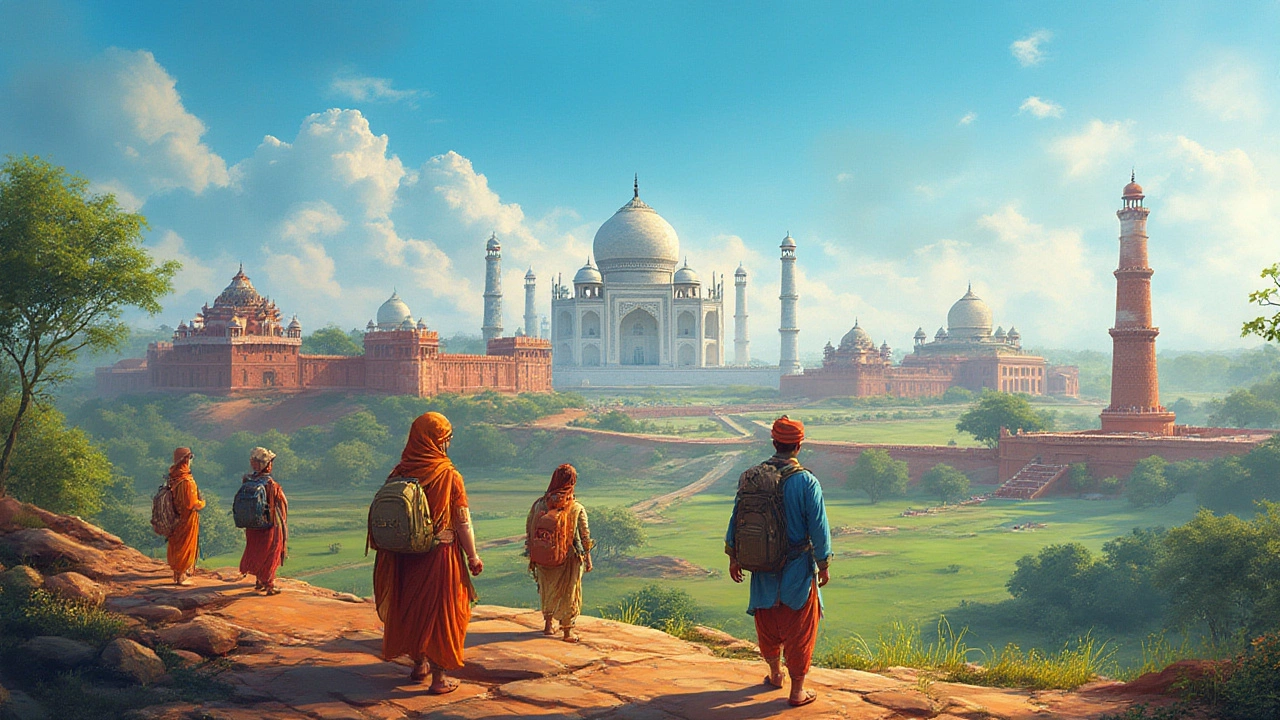Think about India—teeming with so much history that it’s almost overwhelming. Yet, somehow, there’s a friendly competition going on: which state gets bragging rights for having the most UNESCO World Heritage Sites? With centuries of palaces, temples, intricate caves, and even railways, this is not just a battle about numbers—it’s about heritage, pride, and cultural vibrance. There's a clear answer, but the stories and secrets hiding behind those numbers are what make the journey so intriguing.
The Reigning Champion: Maharashtra's Treasure Trove
Maharashtra isn’t just about Mumbai’s film stars and buzzing city lights. It’s the kingpin when it comes to UNESCO World Heritage Sites in India, clocking in more than any other state. As of 2025, Maharashtra officially has five sites recognized by UNESCO, a tiny number if you compare it to the grand total of over forty UNESCO sites across India, but a solid lead against any competition within single states. Here they are:
- Ajanta Caves – those impossibly detailed Buddhist cave paintings, carved more than 2,000 years ago.
- Ellora Caves – a jaw-dropping blend of Buddhist, Hindu, and Jain monuments, all hand-chiseled out of basalt rock.
- Elephanta Caves – located just off Mumbai’s coast, these are famous for the incredible rock-cut Shiva sculptures.
- Chhatrapati Shivaji Maharaj Terminus – a Gothic Revival railway station in Mumbai that almost looks like a cathedral.
- Western Ghats (shared with other states, but the ranges in Maharashtra are included in the listing) – one of the “hottest biodiversity hotspots” on the planet, with rare birds, frogs, and plants stubbornly holding their ground.
What’s cool is Maharashtra’s sites aren’t all from the same era or style. You’ve got the Ajanta Caves dating to the 2nd century BCE, while the Chhatrapati Shivaji Maharaj Terminus came up only in 1887. These aren’t your average dusty relics; they’re living testimonies to the skills, beliefs, and creativity of ancient communities—each drawing in droves of wanderers, artists, architects, students, and families.
| State | Number of UNESCO Heritage Sites |
|---|---|
| Maharashtra | 5 |
| Tamil Nadu | 4 |
| Karnataka | 3 |
| Uttar Pradesh | 3 |
If you’re planning a trip in Maharashtra just for the heritage sites, it's easy to create your own "heritage circuit". Start from Mumbai, check out the Elephanta Caves by ferry, hop onto a train (at the iconic Chhatrapati Shivaji Maharaj Terminus itself!), and make your way to Aurangabad to marvel at Ajanta and Ellora. If you dare, venture into the wild beauty of the Western Ghats. You don’t need to be an archaeologist—just bring curiosity and maybe a willingness to skip the malls for stories carved in stone.

Heritage Beyond the Obvious: Surprises in the Runners-Up
Now that Maharashtra’s claim to fame is clear, it might surprise some to see how strong the competition is. Tamil Nadu, for example, sits close behind. Chola temples rise like stone giants out of quiet towns here, and the group of monuments at Mahabalipuram literally look like something out of a myth. Karnataka and Uttar Pradesh also put up a good fight with three each, like the Hampi ruins—imagine wandering through a vast, open-air museum dotted with colossal granite boulders barely held together by time. But what sets Maharashtra apart isn’t just the quantity—it’s the diversity.
- In Tamil Nadu, you get the ageless Brihadisvara Temple, its towers etched against the sky.
- Karnataka offers the mind-boggling ruins at Hampi and the sculpted temples of Pattadakal.
- Uttar Pradesh gives you the Taj Mahal (which honestly needs no introduction) and the spiritual city of Varanasi, which is vying for a future spot on the list.
But here’s the fun fact most people miss: India is packed with sites that are “tentative” candidates for UNESCO recognition—like Delhi’s Red Fort Complex, Rajasthan’s hill forts, and Varanasi’s sacred traditions. If these new sites get approved, the state rankings could totally flip. That’s why heritage buffs and history geeks (like Finn, who is obsessed with fun facts, by the way) keep a close eye on this annual tally.
Another thing worth mentioning—architecture at these sites isn’t just flamboyant stonework. At Ajanta, you’ll find color pigments made from crushed minerals, lab-tested to date back two millennia. In Ellora, entire temples with massive stone columns were dug top-down. Efforts to keep these places intact aren’t easy—preserving art that’s older than Romeo and Juliet requires tons of paperwork, international cooperation, and sometimes even laser technology. So those ticket prices? Every rupee is basically going to safeguard our grandkids' right to see them.

Not Just Stats: How to Explore India's Heritage for Real
If you’re itching to plan a trip, here's a secret: don’t just tick off “famous” sites. Slip into the quieter corners—less Instagrammed but bursting with hidden legends and local food stalls. For Maharashtra, take a night train to Aurangabad, steer clear from huge tour groups, stroll the Ajanta caves late in the day, and you’ll hear echoes from centuries past. In Ellora, the main Kailasa temple is crowded, but climb higher up, and you might find a monk-in-training humming a hymn or a student sketching the pillars. My daughter Lorelei loves the “secret” staircases and the mystery of the frescos—she convinced our guide to explain every painted scene, one by one, because she was sure there was a code hidden somewhere.
- Always check timing—Ajanta and Ellora are closed on different weekdays, and rain can turn the Ghats into something out of Jurassic Park (good luck if you don’t like getting muddy).
- Bring a flashlight, especially in older caves. Light shows help, but there’s something magical about shining your own light on a 2,000-year-old Buddha.
- Don’t forget to sample some local misal-pav or vada-pav near Aurangabad—local food is part of the adventure.
- Grab official ASI (Archaeological Survey of India) guidebooks, and avoid “unofficial” guides promising secret passageways—they just want your money.
If you’re feeling adventurous, dive into the Western Ghats. Take a trek near Lonavala or Mahabaleshwar—just mind the leeches. You’ll meet botanists, bird-watchers, and sometimes, whole school groups on field trips. Elliot refuses to trek in monsoon season (he still hasn’t forgiven the last mudslide incident), but honestly, it’s when the ghats are at their most dramatic.
It feels like every family, scholar, or backpacker who visits Maharashtra comes away with a different story—not just about “old stuff”, but about discovery, legacy, food, and sometimes even personal change. So next time you’re scrolling through lists and deciding where to go, remember that Maharashtra’s world heritage isn’t just a title; it’s an invitation to step right into the flow of India’s timeless story.
